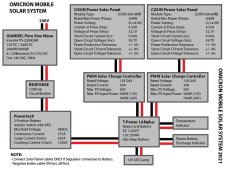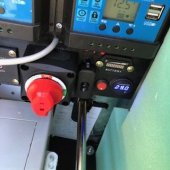KneeOh
New Member
- Joined
- Dec 23, 2021
- Messages
- 22
Greets all, I'm a noob to this solar system.
I recently built a solar system that lives on a car trailer, so I can camp out with a laptop, video projector and a fridge full of beers
Several friends helped out. Then someone told me I need to put a SHUNT onto my system; I replied please dont swear at me buddy
Do I really need one, and if so what Amps?
Tanks in Advance and Happy Festivus for the restofus!
I recently built a solar system that lives on a car trailer, so I can camp out with a laptop, video projector and a fridge full of beers
Several friends helped out. Then someone told me I need to put a SHUNT onto my system; I replied please dont swear at me buddy
Do I really need one, and if so what Amps?
Tanks in Advance and Happy Festivus for the restofus!




